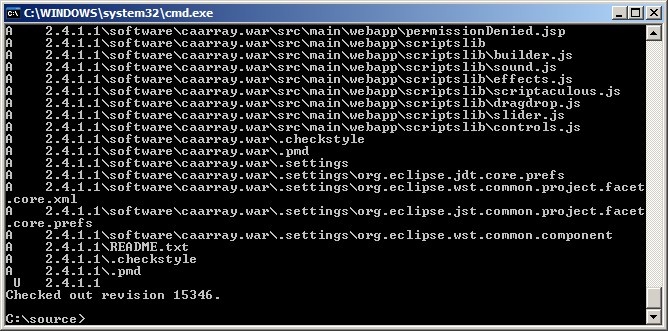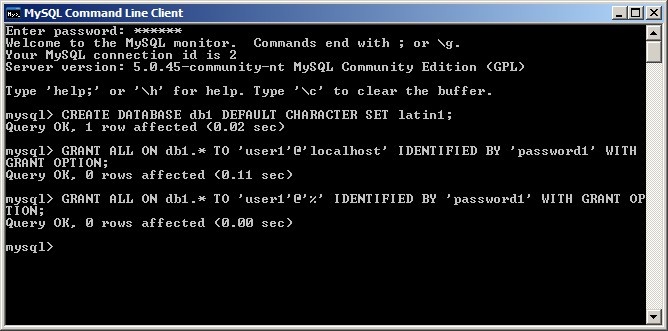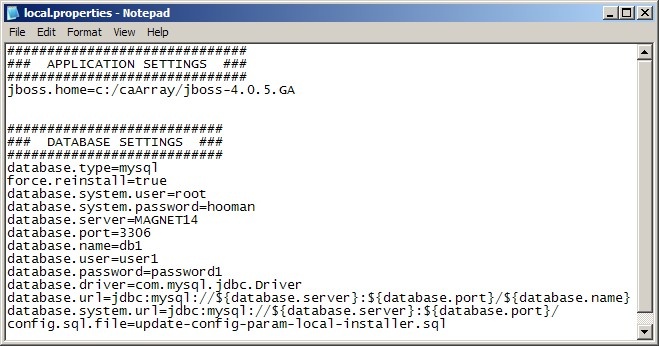 |
Page History
| Scrollbar | ||
|---|---|---|
|
Question: How can I build caArray from the source code in the NCI repository?
Topic: caArray Installation and Upgrade
Release: caArray v2.4.1.1 and higher
Date entered: 01/17/2012
Answer
Below is a step-by-step illustrated tutorial on how to build the application from source. It covers the following:
...
| Info | ||
|---|---|---|
| ||
This tutorial is based on the readme.txt file in the NCI caArray source code repository at https://ncisvn.nci.nih.gov/svn/caarray2/tags/2.4.1.1/. |
Prerequisites
1) Before proceeding to check out the code, ensure that the following are already installed on your machine:
...
- The ANT_OPTS environment variable must be set to the value "-Xmx256m"
- The MySQL server must be configured with a secure password for the root user, and this password must be recorded for future reference
Checking Out The Source Code From The NCI Repository
To begin checking out the caArray source code from the NCI repository, first create a new folder (i.e., C:\source), then open up a command-line window, navigate to that folder, and enter the following:
...
You'll know when the checkout is complete when the command-line window shows a message stating, 'Checked out revision x', where x is the revision number, as shown in the screenshot below:
Manually Creating The Requisite Database Schema
It is possible to have Ant automatically generate the empty database schema required for the caArray installation. However, it is preferred to create these schema manually via the MySQL command line client.
...
The client will respond with a confirmation that the issued queries were successful, as shown in the screenshot below:
Configuring The 'Properties' Settings Files
The caArray installation settings are mainly specified by a source file, install.properties, whose path is:
...
- The username of the root account you established when installing MySQL ('root' by default), as specified by the database.system.user property
- The password of the root account you established when installing MySQL, as specified by the database.system.password property
- The name of your database server (usually the same as the Windows name of your workstation or server), as specified by the database.server property
- The port your database server is installed on (47210 3306 by default), as specified by the database.port property
- The database name you established when manually creating the database schema, as specified by the database.name property
- The username of the user to whom you granted access to this database, as specified by the database.user property
- The password of the user to whom you granted access to this database, as specified by database.password property
- The path to which caArray should be installed, as specified by the application.base.path property
...
Refer to the screenshot below for an example of how the local.properties file should be configured.:
| Info | ||
|---|---|---|
| ||
The install.properties file contains additional properties pertaining to grid services which are not covered here, as configuring caArray to utilize a grid service is beyond the scope of this tutorial. For more information, please refer to this KB article:caArray 006 - Step by Step Guide to Install caArray 2.x Grid Service (caArray 2.2 and Under)
|
Invoking The Build Process From The Command Line
Launching The caArray Server Upon Build Completion
Accessing The Application's Login Page Via Your Web Browser
Have a comment?
Please leave your comment in the caArray End User Forum.
...


